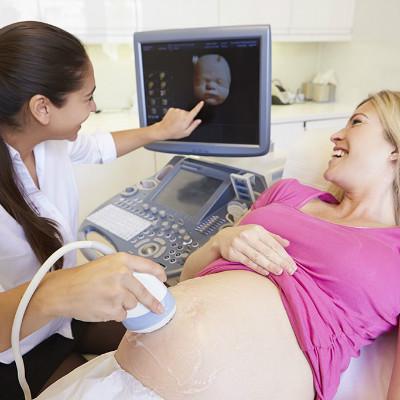What are the causes of vaginal posterior fornix tenderness?
summary
Tubal pregnancy abortion or rupture, there can be full vaginal vault after tenderness. The posterior fornix of the vagina is between the cervix and rectum. You put your finger into the vagina, you can feel a round body, which is the cervix, 8-12cm deep. What are the causes of vaginal posterior fornix tenderness?
What are the causes of vaginal posterior fornix tenderness?
Abortion or rupture of tubal pregnancy. It is more common in isthmus pregnancy at about 6 weeks of pregnancy. The fertilized egg is implanted between the folds of the oviduct mucosa. During the growth and development of the blastocyst, the villi erode the muscle layer and serosa toward the wall of the tube, and finally break through the serosa, resulting in the rupture of the tubal pregnancy. There are abundant blood vessels in the muscle layer of the oviduct. A large amount of intra-abdominal bleeding can occur in a short time, causing shock. The bleeding is far more severe than the abortion of the tubal pregnancy, and it can also cause repeated bleeding, Hematoma was formed in pelvic cavity and abdominal cavity. If the blastocyst is small, it can be absorbed. If the blastocyst is too large, it can form a mass or calcification in the recto uterine fovea. Tubal interstitial pregnancy is rare, but the consequences are serious, the outcome is almost tubal pregnancy rupture. Because of the thick muscle layer and abundant blood supply around the tubal interstitium, rupture often occurs at 12-16 weeks of pregnancy. Its rupture is like uterine rupture, the symptoms are very serious, often in a short period of time appear hypovolemic shock symptoms.

Progesterone was determined. The serum P level of ectopic pregnancy is low, but it is relatively stable at 5-10 weeks of gestation. A single measurement has great diagnostic value. Although the serum P levels of normal and abnormal pregnancy overlap, it is difficult to determine the absolute critical value between them, but the serum P level is lower than 10NG / M1 (radioimmunoassay), which often indicates abnormal pregnancy, and its accuracy is about 90%.

Diagnostic curettage. When ectopic pregnancy cannot be ruled out, diagnostic curettage can be performed to obtain endometrium for pathological examination. However, the endometrial changes of ectopic pregnancy have no characteristics, which can be manifested as decidual tissue, high secretion with or without a? S reaction, and various secretory and proliferative phases. The change of endometrium is related to the presence or absence of vaginal bleeding and the duration of vaginal bleeding. Therefore, the diagnosis of ectopic pregnancy by diagnostic curettage alone has great limitations.

matters needing attention
In order to prevent and avoid abortion, we should pay attention to the following points: 1) acute infectious diseases should be cured after a period of time before pregnancy. Patients with chronic diseases should be treated until their condition is stable and approved by specialists before they become pregnant. 2) For couples with a history of miscarriage, they should go to the hospital in time to check and find out the causes of miscarriage. No matter which side of the couple has problems, they should be treated in time and have children after being cured. 3) Pregnant women should avoid contact with harmful chemicals, such as benzene, mercury, radiation, etc. Early pregnancy should be less to public places to avoid virus and bacterial infection. If pregnant women are ill, they should take medicine in time under the guidance of doctors, and they should not take medicine at will. 4) During the first trimester of pregnancy (within 12 weeks of pregnancy), in addition to diet hygiene and avoiding overwork, we should also avoid excessive tension and maintain emotional stability, so as to facilitate the pregnancy. Do not roommate during the first 3 months of pregnancy. If the examination shows that the fetal development is abnormal, the doctor thinks that the patient should not delay when performing curettage, so as not to cause excessive blood loss (or even shock, death) or the formation of internal genitalia inflammation that affects the future fertility. It should be noted that most aborted embryos generally have congenital defects, which belong to the list of natural elimination, and must not lose too much for small reasons, endangering the health of pregnant women.













